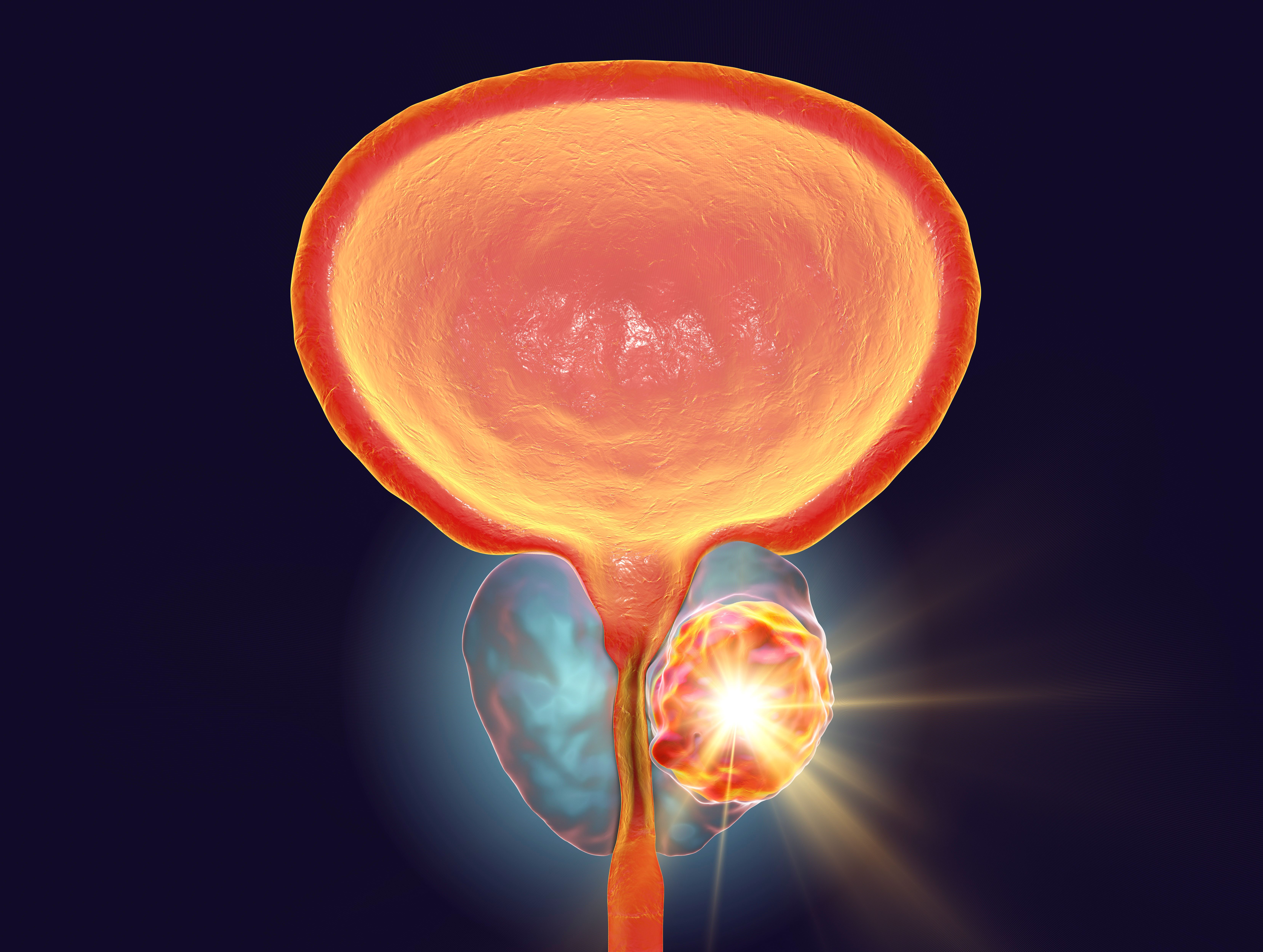Article
Novel AI Model Predicts ADT Benefit in Patients With Prostate Cancer
Author(s):
A predictive artificial intelligence (AI) biomarker of androgen deprivation therapy (ADT) benefit in prostate cancer was validated in a recent study published in NEJM Evidence.
Results of a phase 3 randomized trial published in NEJM Evidence suggest a novel artificial intelligence (AI) model may help determine which patients with localized prostate cancer would benefit from the addition of androgen deprivation therapy (ADT) to radiotherapy.1
While ADT consistently improves oncologic outcomes when added to radiotherapy for prostate cancer, the toxicities associated with ADT can substantially impact patient quality of life. Therefore, differentiating those who are most likely to benefit from ADT vs patients who are unlikely to benefit is key to minimize toxicity for patients whose disease would likely respond well to radiotherapy alone.
Daniel Spratt, MD, the lead author on the paper.
Credit: Case Western Reserve University

The authors noted that there is no validated way to determine who will benefit from ADT, and the current guidelines rely on prognostic National Comprehensive Cancer Network (NCCN) risk stratification and other methods such as Gleason grading and imaging biomarkers.
“Although some of these markers have demonstrated prognostic value, none have been shown to function as predictive biomarkers for ADT use with randomized trial validation,” the authors wrote. “An easy and reliable method to guide the individualized use of ADT with radiotherapy for men with localized prostate cancer would be of value to such patients.”
The predictive AI model validated by the study was trained with digitized data, including pathology images, from 4 NRG Oncology phase 3 randomized trials: Radiation Therapy Oncology Group (RTOG)-9202 (NCT00767286), RTOG-9413 (NCT00769548), RTOG-9910 (NCT00005044), and RTOG-0126 (NCT00033631). Data from patients in the NRG/RTOG-9408 trial (NCT00002597) were used to validate the model’s ability to identify men with localized prostate cancer who would likely benefit from ADT in addition to radiotherapy.
Data from 5727 patients were used to train the model, which stratified patients based on whether they were likely or unlikely to benefit from ADT. Most patients in the model development cohort (n = 2024) had intermediate-risk disease, and median follow-up was 10.6 years. A total of 1050 (52%) patients received radiotherapy alone, and 974 (48%) patients received short-term ADT in addition to radiotherapy.
The final model mainly comprised histopathology features such as Gleason score and imaging results. “Although histopathology features provide a large contribution, the MMAI architecture utilizes deep learning and also captures interaction effects, with the model benefiting from learning of all features,” the authors wrote.
The validation cohort included 1594 patients, 806 of whom received radiotherapy alone and 788 who received radiotherapy and short-term ADT. The validation cohort had a median follow-up of 14.9 years and showed a significant overall improvement in outcomes with ADT.
Among 543 patients in the validation cohort who the model determined were likely to benefit from ADT, the risk of distant metastasis was significantly lower than with radiotherapy alone. Among 1501 patients who the model predicted would experience lesser or no benefit, ADT was not beneficial.
“As a patient’s prognosis worsens (i.e., going from NCCN low to high risk), the recommendations to add ADT to radiotherapy strengthen. This is despite evidence that NCCN risk groups are not predictive of ADT benefit,” the authors wrote. “To this point, we demonstrate that among patients with positive and negative AI model predictions, the baseline PSA [prostate-specific antigen], T stage, and NCCN risk group distribution were similar; there were small differences in the Gleason score. These results confirm that historical categorization of tumor aggressiveness alone is insufficient to determine which patients derive differential relative benefit from ADT.”
Study limitations included the development of the model using retrospective data, the lack of advanced molecular imaging during the era of the trial, and potential disease grade migration due to changes in the Gleason grading system. But the potential bias due to grade migration would probably be random and impact both trial groups, the authors noted.
Overall, the authors concluded that the AI-based predictive model holds promise in guiding ADT use with radiotherapy in localized prostate cancer.
“This is truly a milestone in the treatment for prostate cancer,” said first author Daniel Spratt, MD, the Vincent K. Smith Chair in Radiation Oncology and professor in the Department of Radiation Oncology at UH Seidman Cancer Center and Case Western Reserve University, in a statement.2 “With the first-ever predictive biomarker of ADT benefit in prostate cancer, created with AI, we are able to further realize the ability to create a personalized approach for the treatment of cancer.”
References
1. Spratt DE, Tang S, Sun Y, et al. Artificial intelligence predictive model for hormone therapy use in prostate cancer. Res Sq. Published online June 29, 2023. doi:10.21203/rs.3.rs-2790858/v1
2. A new study published in NEJM Evidence with University Hospitals Seidman Cancer Center researchers and ArteraAI validates the first-ever predictive AI biomarker of androgen deprivation therapy (ADT) benefit in prostate cancer. News release. University Hospitals. June 30, 2023. Accessed July 6, 2023. https://news.uhhospitals.org/news-releases/a-new-study-published-in-nejm-evidence-with-university-hospitals-seidman-cancer-center-researchers-and-arteraai-validates-the-first-ever-predictive-ai-biomarker-of-androgen-deprivation-therapy-adt-benefit-in-prostate-cance.htm

The Impact of ADT for Prostate Cancer on Survival and Patient Well-Being

Cabozantinib Plus Atezolizumab Significantly Improves PFS in Metastatic CRPC



